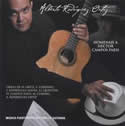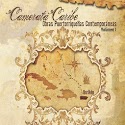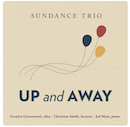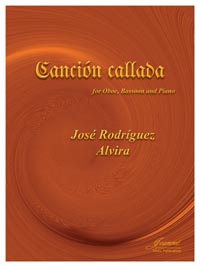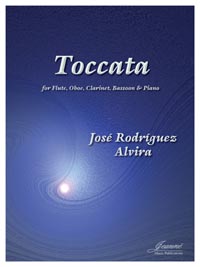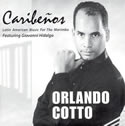Canción callada para oboe, fagot y piano fue terminada en el año 2004 y está dedicada a Camerata Caribe. Es una obra corta, basada en tres notas musicales expuestas desde los primeros compases. Su forma es sencilla: luego de una introducción de ocho compases presentamos la idea principal que será desarrollada en las secciones subsiguientes. El piano sirve de base armónica y rítmica al diálogo melódico entre el oboe y el fagot.
Su carácter melódico me sugirió el nombre de canción. Aunque debo decir que el título vino después de que casi todas las notas musicales llegaran a su lugar (proceso de por sí lento ya que las notas musicales son muy caprichosas y algunas insisten en seguir cambiando). Se preguntarán por qué callada...
Quizás no tenga explicación y de tenerla, me preguntaría si darla traicionaría la esencia del lenguaje musical: un lenguaje cuya precisión en el significado es inversamente proporcional a su expresividad...
Afortunadamente en español el título Canción callada puede resultar un tanto impreciso. No necesariamente trate de una canción que es, contradictoriamente, callada. Podría ser una canción que ha sido callada, o que ha estado callada, o que fue o han tratado de callar... Me viene a la mente la canción de Galileo, callada para poder huir de la Inquisición que no podía aceptar que la tierra girara alrededor del sol o aquella de su compatriota Giordano Bruno callada por las llamas de la hoguera de la que no pudo escapar...
... aunque cuentan que murió (¿calló?) gritando: ¡el universo es infinito!
Nota a estas notas: El título vino después de la música y estas notas después del título. No garantizamos conexión alguna.
Canción callada fue estrenada el 10 de octubre de 2004 en el Conservatorio de Música de Puerto Rico y más tarde grabada por Camerata Caribe a quien está dedicada. Ha sido tocada en numerosas ocasiones incluyendo en el International Double Reed Convention in Utah, 2008. La versión de saxofón fue estrenada el 16 de abril de 2013 por Julio Carrión, Emilio Ríos y Kimberly Davis.
Canción callada for oboe, bassoon and piano was completed in 2004 and is dedicated to Camerata Caribe. It is a short piece based on three notes that are revealed in the first bars. Its form is simple: after an eight measure introduction, the main idea is presented and developed in the following sections. The piano serves as the harmonic and rhythmic basis for the melodic dialog between the oboe and the bassoon.
Its melodic character suggested to me the name canción (song). However, I must say that the title came after almost all the notes had fallen into place (a slow process in itself, since notes are very capricious and some insist on changing). You may ask yourself why callada (quiet)?
Perhaps there is no explanation, and if there is, I wonder if giving it would betray the nature of musical language: a language whose precision of meaning is inversely proportional to its expressiveness...
Fortunately, in Spanish, the title Canción callada can be somewhat imprecise. It is not necessarily a song that is, contradictorily, quiet. It could be a song that has been silenced, or that has been silenced, or that has been tried to be silenced.... One thinks of the song of Galileo, silenced to escape the Inquisition, which could not accept that the earth revolved around the sun, or of his compatriot Giordano Bruno, silenced by the flames of the stake from which he could not escape...
... although it is said that he died (was silenced?) shouting: "The universe is infinite!
Note on these notes: The title came after the music, and these notes came after the title. We do not guarantee any connection.
Canción callada was premiered on October 10, 2004 at the Conservatory of Music of Puerto Rico and later recorded by Camerata Caribe to whom it is dedicated. It has been performed on numerous occasions including at the International Double Reed Convention in Utah, 2008. The saxophone version was premiered on April 16, 2013 by Julio Carrión, Emilio Ríos and Kimberly Davis.
Translated with DeepL Translator
